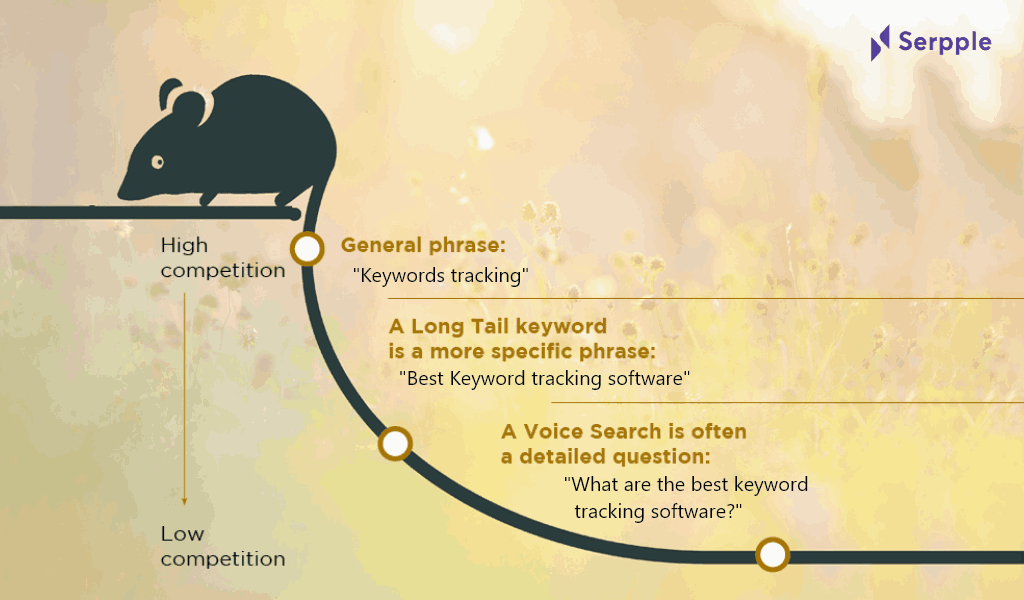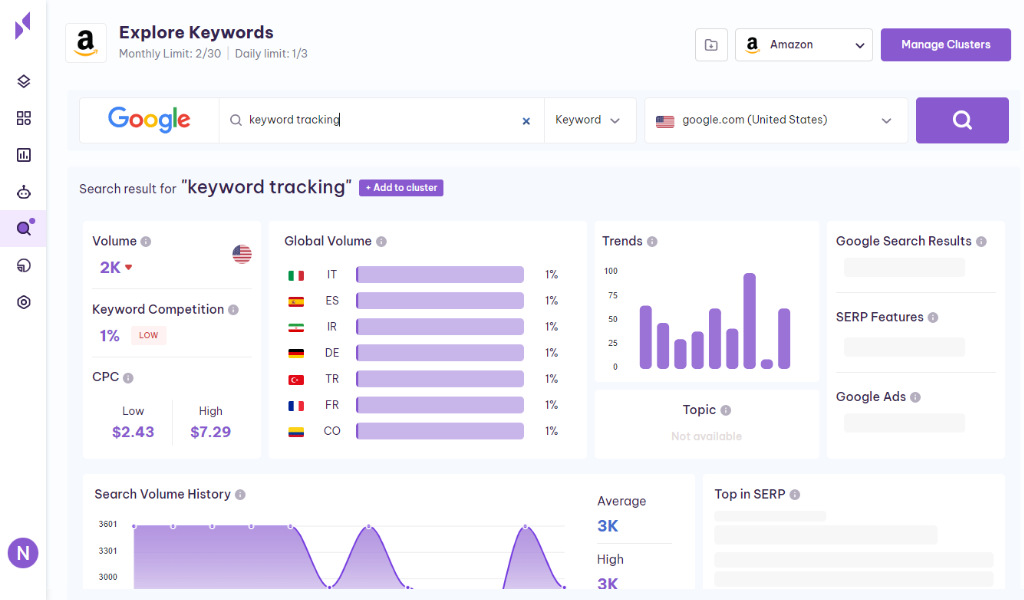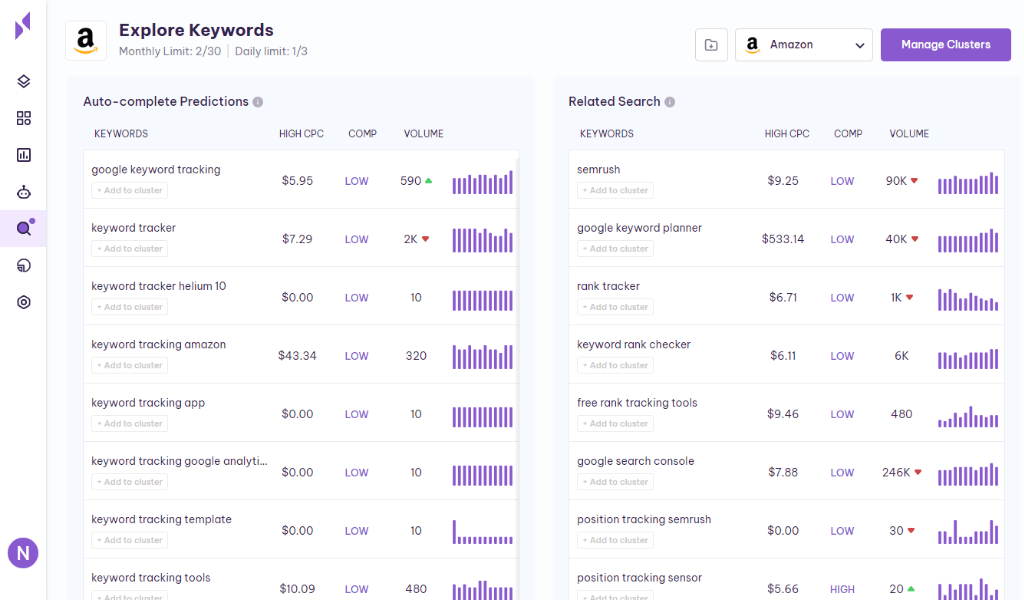
When was the last time you used voice search?
Sometime back?
When was the last time you optimized for voice search?
Not heard of it? Then here we have an article that throws light on the role of long tail keywords in voice search optimization.
Exactly a dozen years back, how many of us believed that voice search would become a prime part of our future?
Not many. Whereas now several households have at least one of those popular voice-activated tools like Siri (Apple), Alexa (Amazon), Google Assistant (Google), and Cortana (Microsoft) to render them a helping hand every day.
The advent of such digital assistants hasn’t just transformed our phones, and daily routines but also the way we perform searches.
People find voice search more comfortable. Nowadays many tend to voice search queries while driving, or when they are busy at work. The queries may be regarding info on upcoming events, deals, store location, operating hours, etc.
And, slowly this has increased the need for online businesses to optimize for voice search. Users having realized the importance of voice commands for searching is a positive sign that it’s slowly evolving to be an integral aspect of SEO.
So, optimizing voice searches is something every business has to take up to stand ahead of its contemporaries. Moreover, when it comes to optimizing voice search, using lengthy phrases that people use while speaking as keywords (long-tail keywords) is advisable.
How does that work?
Stick until the end of this article to find out all about the role of long tail keywords in voice search optimization.
The connection between Long tail Keywords and Voice Search
For instance, we enjoy commanding Alexa to search for something even if it’s easier to search for it manually. This shows that voice search has become an alternative to typing using a keypad.
We do find it easier to press a button and say, “Hey Alexa, is there any cafe nearby?” then unlock a phone, open an app, and type the same.
We all have enough knowledge of how important keywords are for our site and the importance of long tail keywords. But, how do they relate to Voice search?
Voice searches are done only on a mobile device. Many of these voice searches are questions. While a user searches their query in the form of a question the search results will be based on exact match keyword phrases.
And, Google’s artificial intelligence and the RankBrain algorithm have eased the process of fetching these exact-match keyword phrases. Take a look at the graph below for a better understanding the use of long tail keywords in voice search.

The major reason behind employing long tail keywords in voice search optimization is, the web usually has less content targeting those long tail keywords.
Most articles are written targeting keywords with higher volume and very few articles are written around long tail keywords. This reflects there is very less competition for long-tail keywords making it easier for those content to rank above other sites on SERP.
Though they are less competitive, long tail keywords are more specific than our seed keywords. The seed keyword is usually a standard term, with one or two words. You’ll find content posted by millions of sites for such seed keywords.
On the contrary, the long tail keyword is more intentionally targeted. Take a look at how Serpple’s Keyword Explorer Tool shows the number of searches and competition for the long tail keyword, keyword tracking software.
There are 3K searches a month for “keyword tracking,”

The phrase “keyword tracking software” has only 590 searches a month, but low competition.
The term “best keyword tracking software” also has 140 searches a month, but with no competition.
So, while performing a voice search using terms,” keyword tracking software” and “best keyword tracking software” would fetch you exact results you are looking for.
And, while optimizing for voice search you need to pick the right combinations of keywords.
Pro tip:
Choose keywords that have Medium and Low competition. This combo would help you arrive at the best long tail keyword.
Now, scroll to find out more about why to use long tail keywords for voice search and how to optimize for the same with the right mix of keywords.
How to Optimize for Voice Search?
Businesses have started taking voice search optimization too seriously and they’ve started to make changes to their content.
Making changes to your content to make it better suited for voice search results proves to be less efficient in the long run.
The Vital key to achieve this is only through proper long-tail keyword research.
The Role of Long tail keywords in Voice Search SEO
Users search for their queries through a voice assistant the same way they talk to a fellow human being. So, they hardly make use of short keywords.
Instead, they use long phrases to pose their questions. This makes it ideal to use long-tail keywords and phrases often used by people when speaking.
This can be done by brainstorming the questions people might ask related to your keywords,
As a first step of voice search SEO you need to create a list of keywords based on voice searches made. You can also take a look at the past searches done by logging into your Google Ads account and analyzing the search query report of your previous months.
Export those reports and then start sorting queries that are a combination of more than 5 keywords in length. Only such keywords will be conversational.
Similarly, you can also look for queries that begin with, “Hey Siri,” “Hey Alexa” and “Hey Google,”. Once this is done you will have a strong base, the list of keywords needed to optimize your voice search strategy.
Build New Clusters
The next step is to start your normal keyword research process with the help of the best long-tail keyword research tool.
When you use a renowned tool to get the task done you benefit a lot like a chance to sneak peek into your competitors’ keywords, identify competition level and global search volumes of those keywords.
Apart from these you can also make use of Google’s autocomplete predictions to gain insights into what people look for.
And, to obtain the best results, employ question modifiers such as the following:
- Who
- What
- Where
- Why
- When
- How
- Should
- Would
- Can
- Could
- Which
- Is
- Do
- Does
- Have
- Will
- Are
- Was
These modifiers allow you to narrow down on queries that come from voice search. For example, take a look at the autocomplete results that come up when you type, “Longtail keyword”.

And now look at the targeted results fetched when you include one of the modifiers from above list, “how”:

Pro Tip:
You can make use of the other search engine features like “People also ask” and “Searches related to” and expand the keywords even more.
And to do this you needn’t spend time scrolling all the way down the SERP. All you have to do is make use of advanced Google Rank Tracker tool like Serpple which gives users auto suggest results provided by Google and questions from people also ask for that specific keyword.
For example, if you were to input “keyword tracking ” as the keyword, you would receive some of the following results in an easy-to-read grid along with Competition value, CPC and Volume:

After forming clusters you can trim some of the keywords. And, you can also neglect a few keywords that you do not want to optimize for your site, ads, etc.
Research Review Repeat
Having researched and picked the exact long tail keyword you need to use it for optimizing.
And then keep repeating the process. Each time you’ll end up with a list of long tail keywords in voice search optimization.
Next, you need to monitor whether or not they are helping you capture voice search traffic.
If they are, good go on with it, just keep updating your content from time to time. If they are not, then take these long-tail keywords off your list and repeat the process until you have arrived at a list of keywords that helps you reap the desired fruits.
Wrapping-Up
The role of long tail keywords in voice search optimization is prominent. It makes search quicker and easier and above all helps to get the exact result for the query.
It eliminates the task of surfing a website, going through each result on the SERP and finding out the answer you are indeed looking for.
As people are mostly preferring to talk rather than type, it’s high time for Marketers, SEOs, business owners to go back, and modify your strategies by employing long-tail keywords in voice search optimization. Trust the process! You’ll never end up losing your customers to your competitors.
If you’d like to have a healthy discussion about how long tail keywords in voice search optimization can help your site grow organically, join our facebook Community.
FAQ
What’s the need for Long tail Keyword in Voice Search?
When users conduct a voice search they choose long conversational phrases instead of short words. Writing your content with a conversational tone will be easily understood by the audience. And, the exact information gets conveyed.
What is voice search SEO?
The process of optimizing keyword phrases to meet the queries of those using voice assistants. Only then websites will show up on the search results conducted through voice assistants.
How is voice search SEO different from normal SEO?
Keywords are the major difference between traditional SEO and Voice Search SEO. Traditional SEO makes use of short keywords. Whereas long-tail keywords that are conversational are employed in Voice search SEO.
What are the keywords for voice search?
To capture users intent Voice search makes use of the Five Ws and How (Who, What, Where, When, Why, How), other question modifiers and conversational long-tail keywords.
Shivani Suryakandan
Posted on May 13, 2023
Shivani Suryakandan is a published author and now a Content Marketer for Serpple Pvt.Ltd. She is passionate about engaging readers and making them understand complicated concepts through her interactive and innovative content style. Being an ever hungry bookworm she enjoys hooking readers' attention through high-quality content. On weekends you can find her hidden behind the piled up chores or running behind her toddler. To read more of her writings follow her on LinkedIn.



